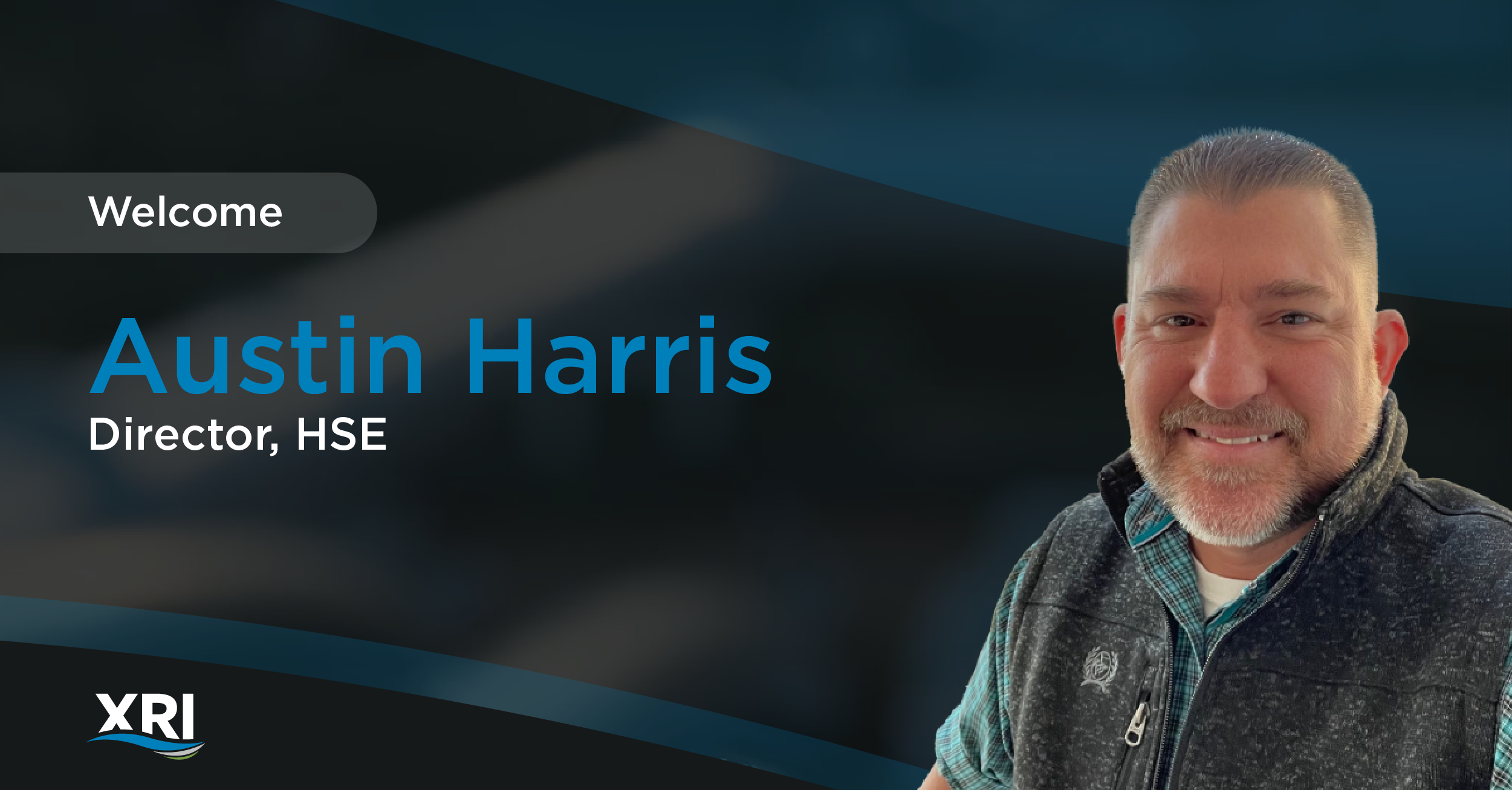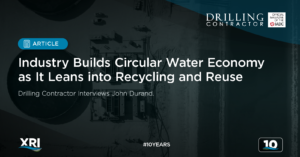Austin Harris joins XRI as the new Director of HSE. Here’s how he plans to evolve our safety culture.
SC: How long have you been in safety?
Austin: I’ve been in safety for close to 10 years, with most of that time being in gas, along with construction. I worked for a company for a little while that did some water sourcing – basically they were pumping it out of the ponds. And I just really liked it. I just enjoyed it.
I think I remember standing up on from one of the ponds. It was a hundred degrees outside and just that breeze, even though the water’s not always the best, you know, I was just sitting up there and the breeze just kind of hit me and, just really enjoyed it after that was when I decided to finish my degree in occupational safety and health, with an emphasis on environmental management.
SC: What made you want to join XRI?
Austin: The last several years I was in construction and I really wanted to get back to an environmental company. One of my favorite jobs I had dealt with the water source and the flowing of that. Then just getting, having a background in oil and gas, it just seemed to really all fit, you know, here, you know, coming to this position.
As XRI we’re very much into the recycling part of it. It’s just neat to see and how we do it. And, it’s really gross when you’re out there watching it, but, in general, it’s how we do it and the way it works is really interesting.
In addition, I really like how our CEO and COO and others are lead speakers at places, and that we’re the leader in the nation for water recycling. I wanted to join this elite company and make our safety culture one that will be envied.
SC: How do you plan to evolve XRI’s safety culture?
Austin: I want to build relationships. That will be the key. If you have some sort of relationship there with everyone, you know, I think that helps the safety department get our culture back on track to where I want everyone to feel comfortable saying, “Hey, we had an accident” or, “Hey, this came up”.
Then saying, “Okay, because we had this accident or because I got injured or because we had a spill, I’m calling safety because they’re gonna be able to help me do this or fix this or clean this up, or, help me with my health” instead of “I’m getting ready to call safety and I gotta make sure I’m not gonna get fired.”
And nine times out of 10, there might be something else going on in their lives that they don’t realize is influencing their decision. If they know they can talk to me and my team, we can help them ensure that a mistake isn’t made again.
SC: Outside of onboarding new employees, how is safety going to be handled in the field and at our different sites?
Austin: I’m trying to really emphasize that you may not want to do something or tell safety or take a proactive approach to it. But right now it’s not even on me anymore. And what I mean by that is our clients – whatever reason that we’re working with them – they’re requiring it. If the customer shows up and sees something that’s off or wrong or whatever, it could go from them giving a slap on the hand all the way to us completely losing a contract with them.
In addition, it’s also letting the team know what is going on outside of XRI. Meaning that the HSE team isn’t asking you to do this, it’s the EPA saying we have to do it. It’s OSHA telling us; it’s our clients and customers telling us.
SC: What else do you want to happen?
Austin: It’s going to take some time, but I want to the communications to be open. Our teams are crazy busy and the safety team wants them to know that we are here to help. We want to learn from them and have them learn from us. I want to go around and say “Show me. Teach me as well.” From there we can build the safety culture where they take the initiative and actually do it themselves in addition to us doing regularly checking.
Eventually we plan to go out and do more training but right now I would love to have one of our field reps go out there and just sit with the PR for a few hours, and learn about what’s going on. Again, it does two things: It builds that relationship and it builds the culture.
Then at the same time we are training each other. I want them to train us, “What is it? What are you doing with the chemicals? How are you doing that?” You know, “What are you looking for if there was an accident” And then we can say this same thing, “Can we do this or should we do this?” “Should you have your safety glasses on here or hard hat, on here? That way we’re doing both – they’re training us, we’re training them. I think that’s gonna be big when that comes down to it.
And it’s not just the field when it comes to safety. Remember, OSHA looks at what is happening in the office as well. Do people know where fire extinguishers are? Escape routes in case of a fire? Ergonomically correct chairs and desk set-ups?


